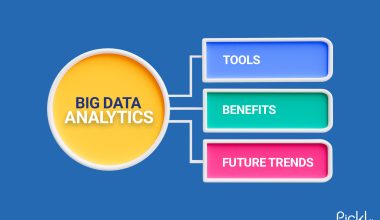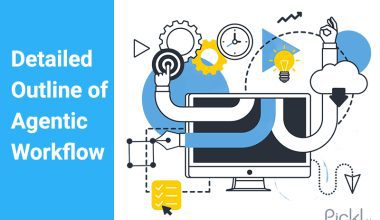Summary: Agentic automation uses AI-driven agents to independently execute, adapt, and optimize workflows. Unlike traditional automation, it autonomously makes decisions, learns in real-time, and collaborates across systems. This technology enhances efficiency, accuracy, and responsiveness in diverse fields like finance, manufacturing, and customer service, revolutionizing enterprise operations.
Introduction
In the ever-evolving landscape of technology, a new frontier is rapidly emerging, promising to redefine how we interact with the digital world. This groundbreaking advancement is known as agentic automation. But what exactly is it, and why is it generating so much buzz?
Imagine a digital assistant that doesn’t just follow your commands but anticipates your needs, independently solves problems, and learns from its rules, agentic automation is dynamic and goal-oriented.
These AI agents can perceive experiences to serve you better. This is the core promise of agentic automation, a transformative technology set to revolutionize everything from our environment to complex business operations.
Key Takeaways
- Agentic automation enables autonomous AI-driven task management and decision-making.
- It dynamically adapts workflows based on real-time data and conditions.
- Unlike traditional automation, it improves through continuous learning and feedback.
- This technology enhances operational efficiency and customer experience in multiple industries.
- Agentic AI supports complex, multi-step processes requiring cognitive and contextual understanding.
What is Agentic Automation?
Powered by advanced technologies like large language models (LLMs) and generative AI, agentic automation can tackle unstructured data to automation powered by artificial intelligence (AI) agents that can make decisions and take actions on their own.
Unlike, recognize patterns, and formulate plans to execute tasks that would otherwise require human intervention. Think traditional automation, which rigidly follows predefined rules and workflows, agentic AI is dynamic and goal-oriented.
It leverages advanced AI, including large language models (LLMs) and generative AI, to perceive its environment, reason of it as upgrading from a simple calculator that follows instructions to a seasoned financial advisor who can analyze market trends and make strategic recommendations.
Key Features of Agentic Automation
Several are designed to operate in dynamic environments. They can learn from their experiences and adapt their strategies when faced with new information or unexpected changes. Key characteristics distinguish agentic automation from its predecessors:
Context-Aware Decision-Making
These agentic systems can operate independently to achieve goals, even anticipating potential issues and addressing them proactively. AI agents can understand context, enabling them to make more intelligent and relevant decisions. They analyze real-time data from various sources to inform
Adaptability and Learning
These systems are not static. They can learn from their interactions and outcomes, continuously improving their performance and their actions.
End-to-End Orchestration
Agentic automation can be managed over time. If a process changes, an agentic system can adapt without needing to manually reprogram entire complex workflows from start to finish, coordinating across different systems, departments, and even with human teams.
How Agentic Automation Works
This step-by-step approach allows agentic automation to autonomously handle complex, multi-stage workflows with intelligence, flexibility, and continuous improvement.
Goal Interpretation
The AI agent receives a high-level objective or task description, often in natural language. It processes and understands the intent, context, and constraints of the task.
Task Decomposition
The agent breaks down the overall goal into smaller, manageable subtasks. It plans the sequence and dependencies among these subtasks dynamically.
Data Gathering and Integration
The agent collects data from multiple sources such as databases, APIs, documents, and external systems. It integrates structured and unstructured data to form a comprehensive information base.
Decision-Making and Analysis
Using machine learning and AI models, the agent analyzes data patterns and predicts outcomes. It makes informed decisions on how to proceed with subtasks based on real-time input and historical data.
Action Execution
The agent performs actions by interacting with software applications, APIs, or robotic process automation (RPA) tools. Actions include data entry, sending communications, updating records, or triggering other automated workflows.
Real-Time Monitoring and Adaptation
The agent continuously monitors task progress and environmental changes. It adapts actions dynamically, retries failed steps, or reroutes the workflow as needed.
Collaboration & Orchestration
Multiple AI agents may work collaboratively, coordinating their efforts to complete complex tasks. Orchestration ensures smooth hand-offs and task synchronization across agents and systems.
Learning and Optimization
The agent uses feedback and performance data to learn and improve. Machine learning models are updated to enhance future decision accuracy and efficiency.
Governance and Human Oversight
Throughout the process, human supervisors can monitor and intervene if necessary. Governance ensures compliance with policies, security, and ethical standards.
Benefits of Agentic Automation of Agentic Automation
The adoption of agentic automation offers a multitude of benefits for businesses across various industries:
Improved Decision-Making
With the ability to analyze vast amounts of data in real-time, these systems can provide data-driven insights, leading to faster and more accurate decisions.
Productivity
By automating complex, multi-step processes, agentic AI can handle tasks that were previously too nuanced for traditional automation, freeing up human workers to focus on more strategic initiatives.
Improved Decision-Making
Agentic systems can analyze vast amounts of data in real-time, identifying patterns and trends that might be missed by human-making.
Better User Experience
In customer service, AI-powered agents can provide personalized, and technology can automate tasks that were previously considered too complex for traditional automation, such as those involving unstructured data and nuanced judgment.
Enhanced Customer and Employee Experience
AI-powered agents can provide personalized and proactive support, leading to greater satisfaction for both customers and employees.
Real-World Use Cases and Agentic Automation Examples
Agentic automation harnesses AI-driven autonomous agents to perform complex tasks independently, adapting in real time to changing conditions. This technology revolutionizes workflows by enabling smart decision-making and seamless execution across industries.
Banking and Finance
AI agents detect fraud and autonomously flag suspicious transactions, enhancing security. JPMorgan Chase uses agentic automation for risk assessment and compliance reporting.
Insurance
Entire claims processing is automated, from claim filing to payout. For example, insurers like Progressive use AI to speed up claims and improve customer experience.
Supply Chain & Retail
Retailers optimize inventory by analyzing sales trends and automatically adjusting orders. Walmart employs agentic automation to manage stock levels dynamically.
Customer Service
AI agents handle inquiries, resolve issues, and provide personalized support without human intervention. Companies like Amazon use such systems to maintain 24/7 customer service.
Manufacturing
Predictive maintenance enabled by AI agents helps avoid equipment failures. Siemens leverages this technology to monitor machine health and optimize operations.
IT Operations
Agentic AI detects, diagnoses, and resolves issues autonomously. IBM deploys agentic automation in IT service management to reduce downtime.
Conclusion
Agentic automation represents a paradigm shift in the field of artificial intelligence and by enabling systems to think, learn, and act autonomously, it holds the key to unlocking unprecedented levels of efficiency, innovation automation.
By moving beyond simple, rule-based tasks to embrace autonomous, goal-driven action, this technology is unlocking new, and personalization. While there are challenges to navigate, the potential benefits are too significant to ignore.
As this technology continues to evolve levels of efficiency, intelligence, and agility for businesses. While challenges remain, the potential benefits are too significant to ignore. It will undoubtedly reshape our world, empowering us to achieve more than ever before.
Frequently Asked Questions
What is an agentic technology?
An agentic technology refers to any system or tool that exhibits “, and make autonomous decisions to achieve a goal, rather than just following a script.
What is the difference between RPA and agentic?
The primary difference lies in their capabilities and how they operate. Robotic Process Automation (RPA) the AI to perceive its environment, make decisions, and adapt its actions to complete complex tasks with minimal human guidance.
What is the difference between automation and agentic AI?
Agentic AI differs from traditional automation in that it is adaptive, context-aware, and capable of independent decision-making. While traditional automation follows fixed, rule-based workflows for repetitive tasks, Agentic AI dynamically learns, adjusts, and solves complex problems autonomously, enhancing flexibility and intelligence.
Traditional automation is static and reliable; Agentic AI is self-learning and proactive. This makes Agentic AI better suited for tasks requiring adaptability and nuanced decision-making.



